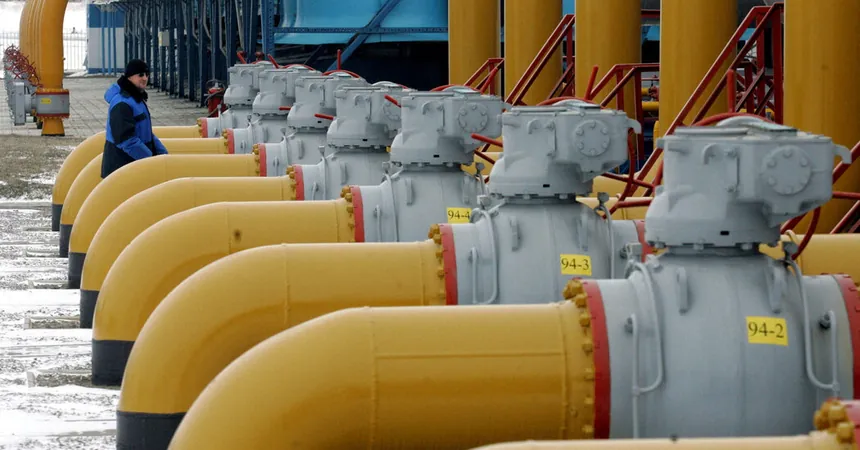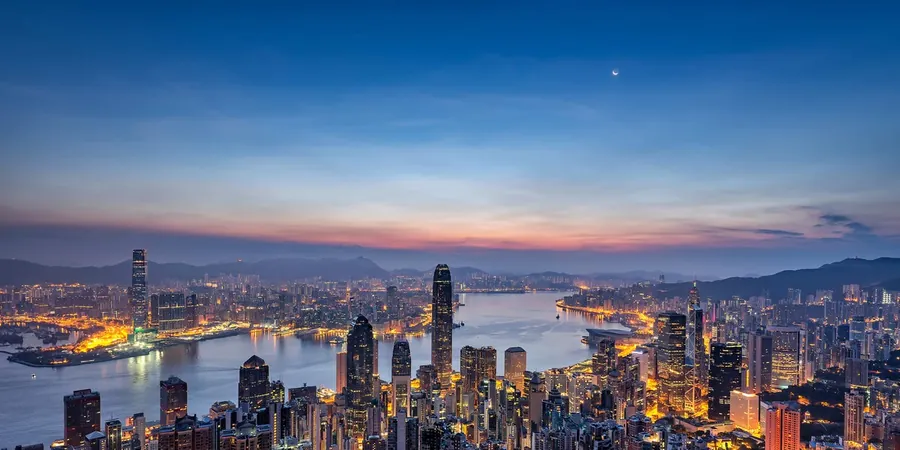
The Shocking Halt of Russian Natural Gas Flow Through Ukraine – What It Means for Europe!
2025-01-01
Author: Jia
In a dramatic turn of events, natural gas flow through a critical pipeline linking Russia to Europe has come to a halt, as confirmed by officials from both nations. This decision, while long anticipated, has far-reaching implications for Europe’s energy landscape and might significantly impact Russia's capacity to finance its ongoing war in Ukraine.
The Urengoy-Pomary-Uzhgorod pipeline, established during the Soviet era, has historically served as a vital channel for transporting Siberian gas to European markets. This pipeline represented the last major route available to Russia following the 2022 sabotage of the Nord Stream pipeline, which many speculate was carried out by Ukraine, and the cessation of transit through Belarus to Poland.
Why Now?
Ukrainian President Volodymyr Zelensky had consistently warned that he would not renew the crucial five-year transit contract, which lapsed at midnight on December 31. This agreement was in place before Russia's full-scale invasion of Ukraine, following its annexation of Crimea in 2014.
Ukraine, along with allied Western nations, is strategically working to cripple Moscow’s ability to fund its military endeavors and to diminish the Kremlin's exploitation of energy as a political weapon. Analysts project that the termination of this pipeline could cut Russia’s energy revenues by an astonishing $6.5 billion annually.
However, this maneuver carries inherent risks for Ukraine. Military experts caution that Russia may now retaliate by targeting Ukraine’s pipeline infrastructure, which thus far has been spared significant attacks.
Implications for Europe
The expiration of the gas transit deal was forecasted well in advance, allowing European nations to brace for the impact. Fortunately, significant disruptions to gas prices are not anticipated due to the availability of alternative energy sources. Nevertheless, the energy crisis in Europe remains precarious.
In the wake of Russia's invasion of Ukraine, Europe saw a drastic reduction in reliance on Russian gas, which supplied over 40% of the European Union’s imported gas in 2021 but plummeted to below 15% last year. The Ukrainian pipeline contributed only about 5% of Europe's gas imports in recent times, but its closure could exacerbate an already strained energy market, causing ripple effects in regions that depend heavily on these supplies.
European natural gas prices have surged over 50% in the past year, although they still fall short of the extraordinary highs that followed the invasion. The crucial concern for market analysts is not that countries will completely run out of gas, but that sourcing alternative fuel will become increasingly complex and costly. Currently, European natural gas prices are approximately four times higher than those in the United States.
Affected Nations
Austria, Hungary, and Slovakia — three EU countries that previously depended on Russian energy — are navigating this transition. The Austrian government has proactively sought alternative suppliers, with local energy company OMV confirming its exit from contracts with Gazprom.
Meanwhile, Hungary continues to receive its gas through the TurkStream pipeline, and Slovakia's government has expressed confidence in managing potential shortages, despite the prime minister’s close ties to Russia.
Countries outside the EU, including Serbia and various Balkan nations, still purchase Russian energy. Moldova, heavily reliant on gas from the region, has even declared a state of emergency due to fears of energy shortages. To counter this, Romania has offered to assist Moldova in avoiding a potential energy crisis.
What’s Next?
As Europe strives to reduce dependency on Russian energy amid growing tensions, the geopolitical landscape continues to shift. Nations are racing to identify alternative sources and improve energy resilience, setting the stage for a new era in energy politics. The ramifications of Ukraine's pipeline halt will be closely monitored not only for immediate effects but also for long-term strategies that could transform the continent's energy framework.
This critical juncture demands our attention—is Europe prepared for the challenges that lie ahead?


 Brasil (PT)
Brasil (PT)
 Canada (EN)
Canada (EN)
 Chile (ES)
Chile (ES)
 Česko (CS)
Česko (CS)
 대한민국 (KO)
대한민국 (KO)
 España (ES)
España (ES)
 France (FR)
France (FR)
 Hong Kong (EN)
Hong Kong (EN)
 Italia (IT)
Italia (IT)
 日本 (JA)
日本 (JA)
 Magyarország (HU)
Magyarország (HU)
 Norge (NO)
Norge (NO)
 Polska (PL)
Polska (PL)
 Schweiz (DE)
Schweiz (DE)
 Singapore (EN)
Singapore (EN)
 Sverige (SV)
Sverige (SV)
 Suomi (FI)
Suomi (FI)
 Türkiye (TR)
Türkiye (TR)
 الإمارات العربية المتحدة (AR)
الإمارات العربية المتحدة (AR)